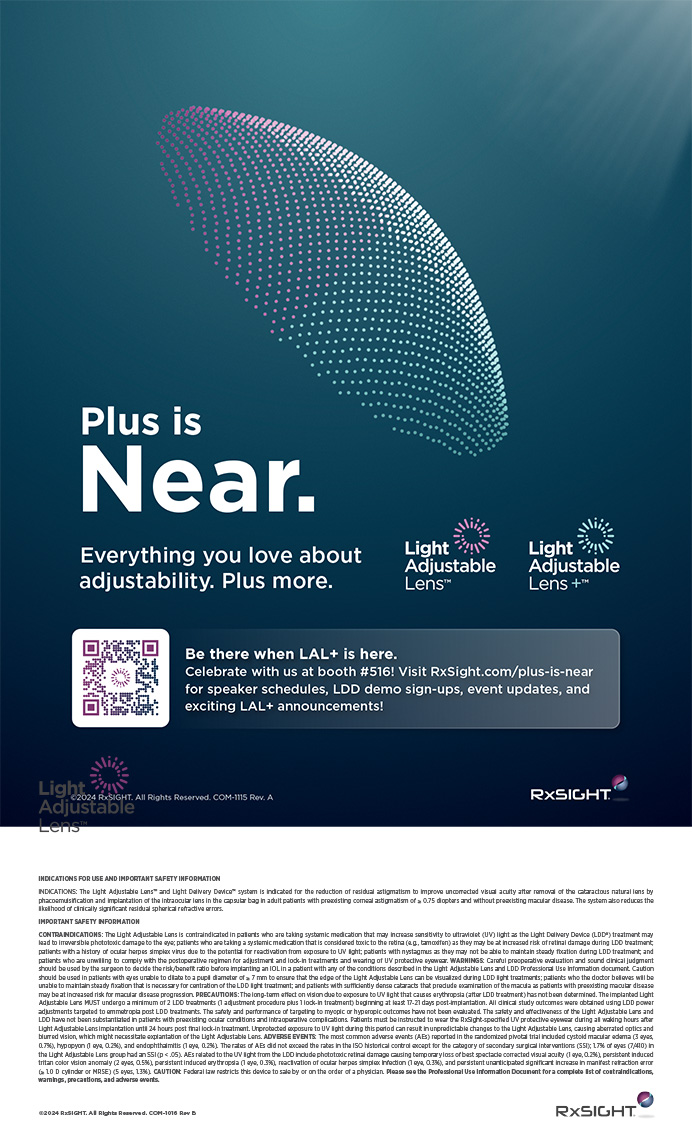The editors of Cataract & Refractive Surgery Today asked me to review two articles in the literature dealing with keratoconus treated by PRK and to comment on the conclusions reached by the investigators.1,2 Rather than deal with those articles specifically, I believe it is more productive to discuss keratoconus and forme fruste keratoconus as well as the applicability of treating both with surface ablation. The main question is, does surface ablation cause the progression of forme fruste keratoconus to keratoconus or the worsening of preexisting keratoconus?
CONCEPTS CONCERNING KERATOCONUS AND FORME FRUSTE KERATOCONUS
I believe that subtle irregular astigmatism, which is better diagnosed by a manual keratometer than automated topography, constitutes mild keratoconus, not forme fruste keratoconus as has been reported commonly in the past. True forme fruste keratoconus cannot be diagnosed preoperatively because no irregularity is present. Because the contour pattern offered by automated topography can be suggestive, but not definitive, as to the existence of mild corneal irregularity, another instrument that can provide a "yes" or "no" as to whether the presence of corneal irregular astigmatism exists is often required. This instrument is the manual keratometer.
There is an association between reduced central corneal thickness (< 500?m) and the increased probability that forme fruste keratoconus exists and that corneal irregularity will become evident if the cornea is greatly weakened (ie, a lamellar refractive surgery such as LASIK). In other words, the relationship is between a thin cornea and the likelihood that induced astigmatism will occur if the cornea is weakened.
Keratoconus usually becomes manifest in the midteen years. The subsequent 10 to15 years tend to be a period of increasing progression, if that is the nature of a given patient's condition.
The severity of keratoconus is determined by the amount of corneal surface irregularity (visual acuity with hard contact lenses to visual acuity with spectacles), not just by the thinness of the corneas, because the starting thickness may not be known. Serial pachymetry or an examination of the cornea of the patient's other eye may provide some clues as to the initial thickness of the cornea under consideration for surgery.
PINPOINTING THE CAUSES
Given the issues outlined earlier, the reader of a case report involving keratoconus and PRK must be aware of several potential pitfalls. If a surgeon concludes that a PRK worsened keratoconus, one should ask if the patient was young and if the increase in corneal irregularity was actually a progression of the basic keratoconus. Did the treated cornea have mildly irregular astigmatism preoperatively that was not diagnosed but was present postoperatively? Did the surgeon personally perform manual keratometry both pre- and postoperatively and correlate these findings with the patient's automated topography, history, and slit-lamp examination? What was the sensitivity of the automated topographic instrument to diagnose corneal irregular astigmatism, and was the same instrument used pre- and postoperatively?
DR. NORDAN'S OPINION
Based upon more than 10 years of treating hundreds of patients with mild keratoconus (BSCVA of 20/40 or better) by means of PRK, it is my impression that the procedure does not cause this form of the disease to progress. Greater numbers of cases by other researchers will provide important data. However, until corneal automated topography is considered an excellent screening method (but not as sensitive as the manual keratometer or future technology) for diagnosing subtle irregular astigmatism, significant progress will be difficult. The preoperative status of the mild keratoconic cornea is often very uncertain and poorly documented.
CONCLUSION
Treating mild keratoconus by means of surface ablation is potentially of great value because many deserving patients can obtain significantly improved UCVA. The increased interest of refractive surgeons in this area is gratifying. Much more data, both pro and con, should be reported within the next year or so. Nevertheless, a fair amount of confusion on the subject will remain until ophthalmologists revisit and perhaps redefine some of the existing concepts of mild keratoconus, forme fruste keratoconus, and the documentation of corneal induced astigmatism.
Lee T. Nordan, MD, is a technology consultant for Vision Membrane Technologies, Inc., in San Diego, California. Dr. Nordan may be reached at (858) 487-9600; laserltn@aol.com.


